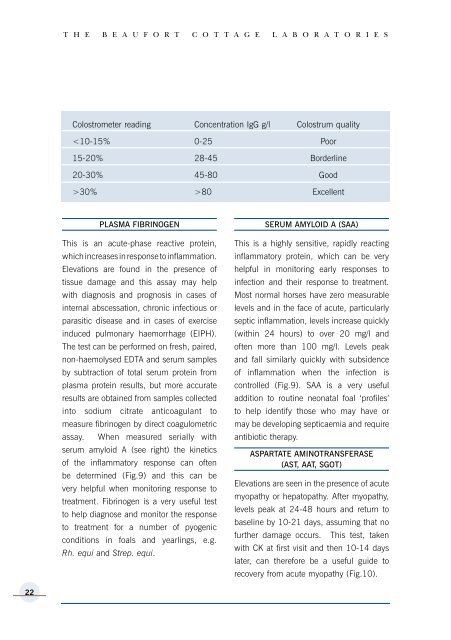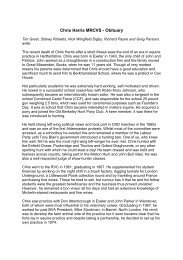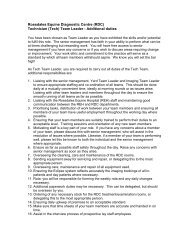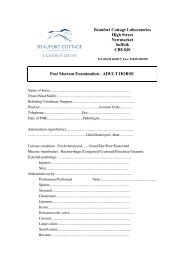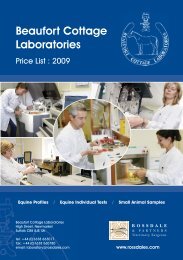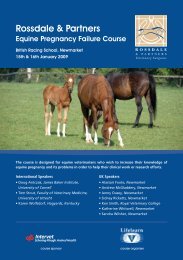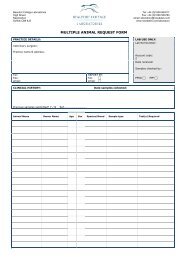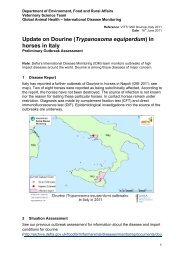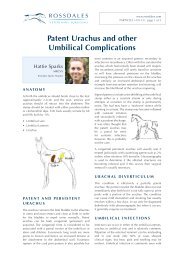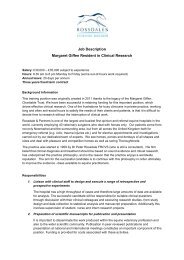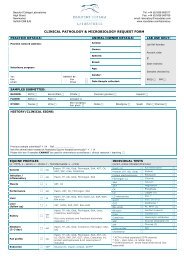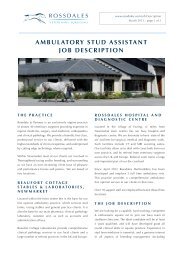EQUINE CLINICAL PATHOLOGY - Rossdale & Partners
EQUINE CLINICAL PATHOLOGY - Rossdale & Partners
EQUINE CLINICAL PATHOLOGY - Rossdale & Partners
Create successful ePaper yourself
Turn your PDF publications into a flip-book with our unique Google optimized e-Paper software.
T h e B e a u f o r t c o t t a g e l a b o r a t o r i e s<br />
Colostrometer reading Concentration IgG g/l Colostrum quality<br />
30% >80 Excellent<br />
Plasma Fibrinogen<br />
This is an acute-phase reactive protein,<br />
which increases in response to inflammation.<br />
Elevations are found in the presence of<br />
tissue damage and this assay may help<br />
with diagnosis and prognosis in cases of<br />
internal abscessation, chronic infectious or<br />
parasitic disease and in cases of exercise<br />
induced pulmonary haemorrhage (EIPH).<br />
The test can be performed on fresh, paired,<br />
non-haemolysed EDTA and serum samples<br />
by subtraction of total serum protein from<br />
plasma protein results, but more accurate<br />
results are obtained from samples collected<br />
into sodium citrate anticoagulant to<br />
measure fibrinogen by direct coagulometric<br />
assay. When measured serially with<br />
serum amyloid A (see right) the kinetics<br />
of the inflammatory response can often<br />
be determined (Fig.9) and this can be<br />
very helpful when monitoring response to<br />
treatment. Fibrinogen is a very useful test<br />
to help diagnose and monitor the response<br />
to treatment for a number of pyogenic<br />
conditions in foals and yearlings, e.g.<br />
Rh. equi and Strep. equi.<br />
Serum Amyloid A (SAA)<br />
This is a highly sensitive, rapidly reacting<br />
inflammatory protein, which can be very<br />
helpful in monitoring early responses to<br />
infection and their response to treatment.<br />
Most normal horses have zero measurable<br />
levels and in the face of acute, particularly<br />
septic inflammation, levels increase quickly<br />
(within 24 hours) to over 20 mg/l and<br />
often more than 100 mg/l. Levels peak<br />
and fall similarly quickly with subsidence<br />
of inflammation when the infection is<br />
controlled (Fig.9). SAA is a very useful<br />
addition to routine neonatal foal ‘profiles’<br />
to help identify those who may have or<br />
may be developing septicaemia and require<br />
antibiotic therapy.<br />
Aspartate Aminotransferase<br />
(AST, AAT, SGOT)<br />
Elevations are seen in the presence of acute<br />
myopathy or hepatopathy. After myopathy,<br />
levels peak at 24-48 hours and return to<br />
baseline by 10-21 days, assuming that no<br />
further damage occurs. This test, taken<br />
with CK at first visit and then 10-14 days<br />
later, can therefore be a useful guide to<br />
recovery from acute myopathy (Fig.10).<br />
22


